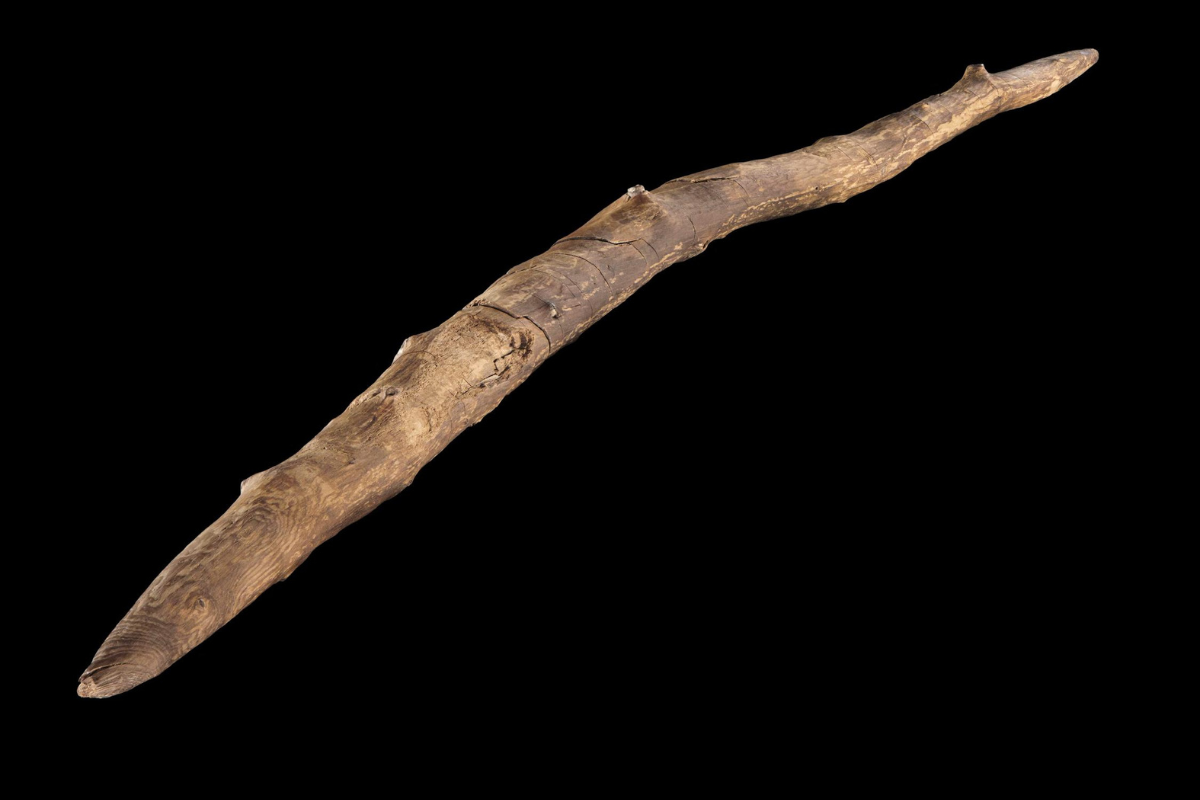Technological secrets from 300,000 BC: How one stick revealed early humans were more skilled than we thought
It’s the first time that scientists have proved that pre-Homo-sapiens species of humans had developed sophisticated woodworking skills

New archaeological research has revealed that now long-extinct pre-modern species of humans were much more technologically skilled than previously thought.
Investigations led by a University of Reading archaeologist are showing that thousands of years before our species, <em>Homo sapiens</em>, existed, a now long-vanished early human species had developed sophisticated woodworking techniques.
A detailed scientific study of a 300,000 year old wooden projectile (a so-called throwing stick), found at Schöningen near Hanover in Germany, has revealed that the timber (part of a slightly curved spruce branch) was chosen with great care and that it was then de-barked and slowly seasoned (perhaps using gentle heat from a fire).
The archaeological investigation also demonstrated that the two ends of the 77 centimetre long projectile were then sharpened – and that the entire object was then sanded and polished to enhance its aerodynamic capabilities. It probably had a range of around 30 metres - and would have rotated, boomerang-style, when in flight. The very complex research into the Stone Age weapon involved three-dimensional microscopy, CT scanning and infrared spectrometry, to identify subtle surface and internal features. Although lightweight, the high velocity at which the weapon would have been launched would have resulted in deadly high-energy impacts.
It’s the first time that scientists have proved that pre-Homo-sapiens species of humans had developed sophisticated woodworking skills.
The 300,000 year old prehistoric German throwing stick was abandoned by its Stone Age owners by the side of a now long-vanished lake – along with more than ten well-made wooden spears, each up to 2.5 metres long.
Archaeologists are now, for the first time, carrying out a detailed study of several hundred broken and complete wooden artefacts found at the Schöningen site back in the 1990s. The project, being carried out by the Lower Saxony State Office of Cultural Heritage, is likely to produce a much more detailed understanding of early prehistoric craftwork than has previously been possible. The now long-extinct human species, whose members made the artefacts, is believed to have been an ancestor of our species (Homo sapiens) called Homo heidelbergensis.
The spears and other wooden objects had been used by their Stone Age owners to hunt wild horses and red deer as those animals sought water at the edge of the lake. The throwing stick may possibly have been used to catch water birds - or to injure the horses and deer.
It’s not known why the Stone Age Schöningen hunters abandoned so many pieces of hunting equipment. Some may have been discarded because they were broken, but others may have been lost among the tall lakeside reedbeds and in potentially deep mud and murky water.
“Discoveries of wooden tools have revolutionised our understanding of early human behaviours. Amazingly these early humans demonstrated an ability to plan well in advance, a strong knowledge of the properties of wood, and many sophisticated woodworking skills that we still use today,” said Dr Annemieke Milks, the Reading University archaeologist, who has been leading the research on the Schöningen throwing stick.
Evidence for pre-Homo-sapiens woodworking is extremely rare.
The earliest, albeit indirect, evidence comes from Tanzania. Archaeologists there have unearthed stone tools with evidence that they were used to work wood as early as 1.6 million years ago.
Archaeologists also found a very ancient polished wooden willow plank in northern Israel - dated to around 750,000 years ago.
The oldest weapon in the world (part of a wooden spear) dates from 400,000 years ago - and was found in Clacton, Essex, in 1911 (and is now on display in London’s Natural History Museum).
Another location, which has yielded a very early example of sophisticated wood-working (a spear) is Lehringen near Bremen in Germany. Found in 1948, it had been used to kill a large elephant 125,000 years ago.
Dr Milks’ investigation into the Schöningen throwing stick has just been published in the open access online science journal, PLOS ONE: https://journals.plos.org/plosone/article?id=10.1371/journal.pone.0287719
The 300,000 year old Stone Age weapon is on display at the Forschungsmuseum in Schöningen.
Subscribe to Independent Premium to bookmark this article
Want to bookmark your favourite articles and stories to read or reference later? Start your Independent Premium subscription today.

Join our commenting forum
Join thought-provoking conversations, follow other Independent readers and see their replies